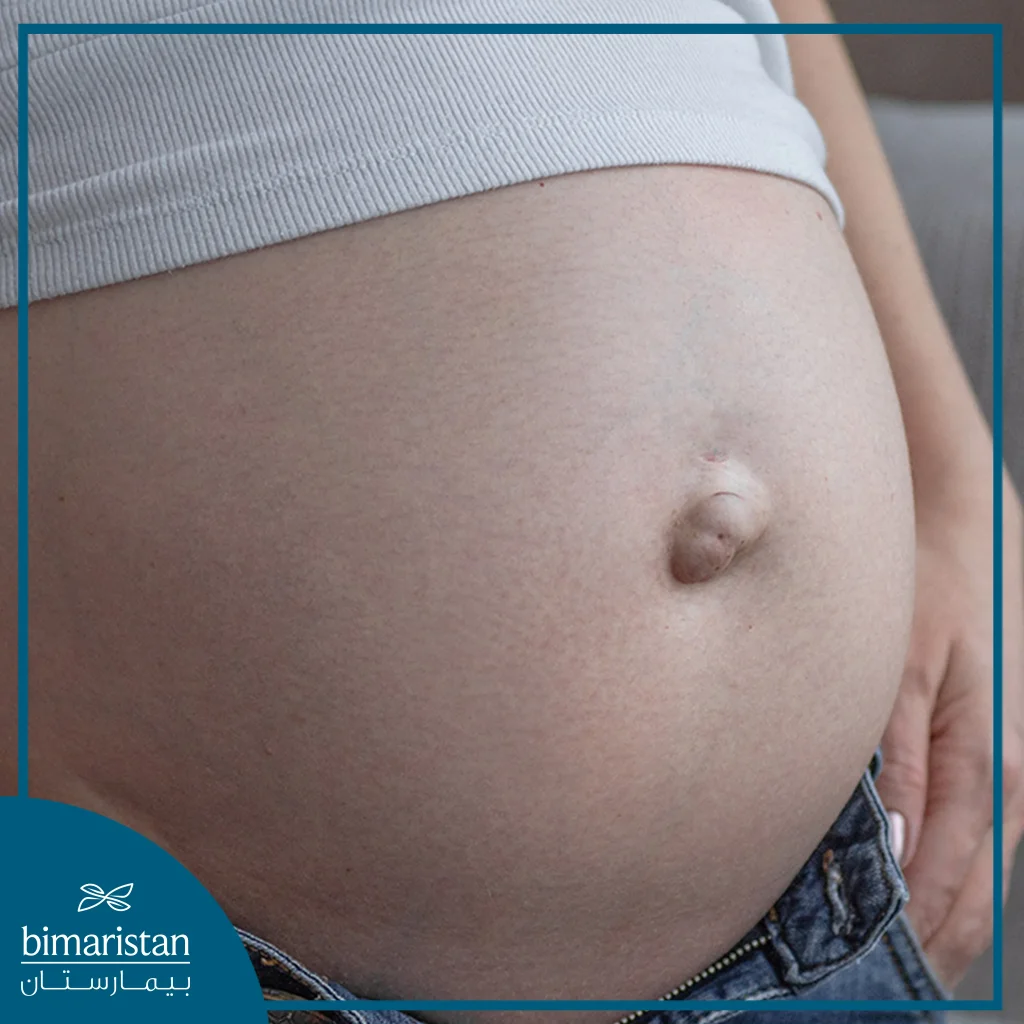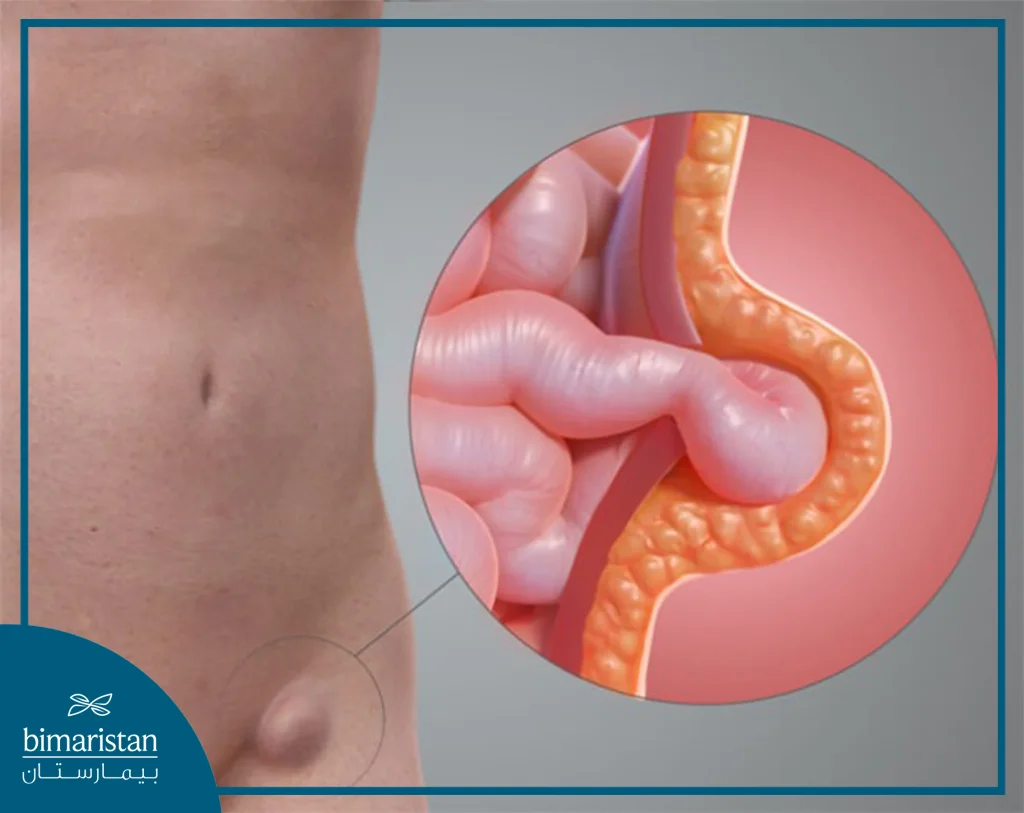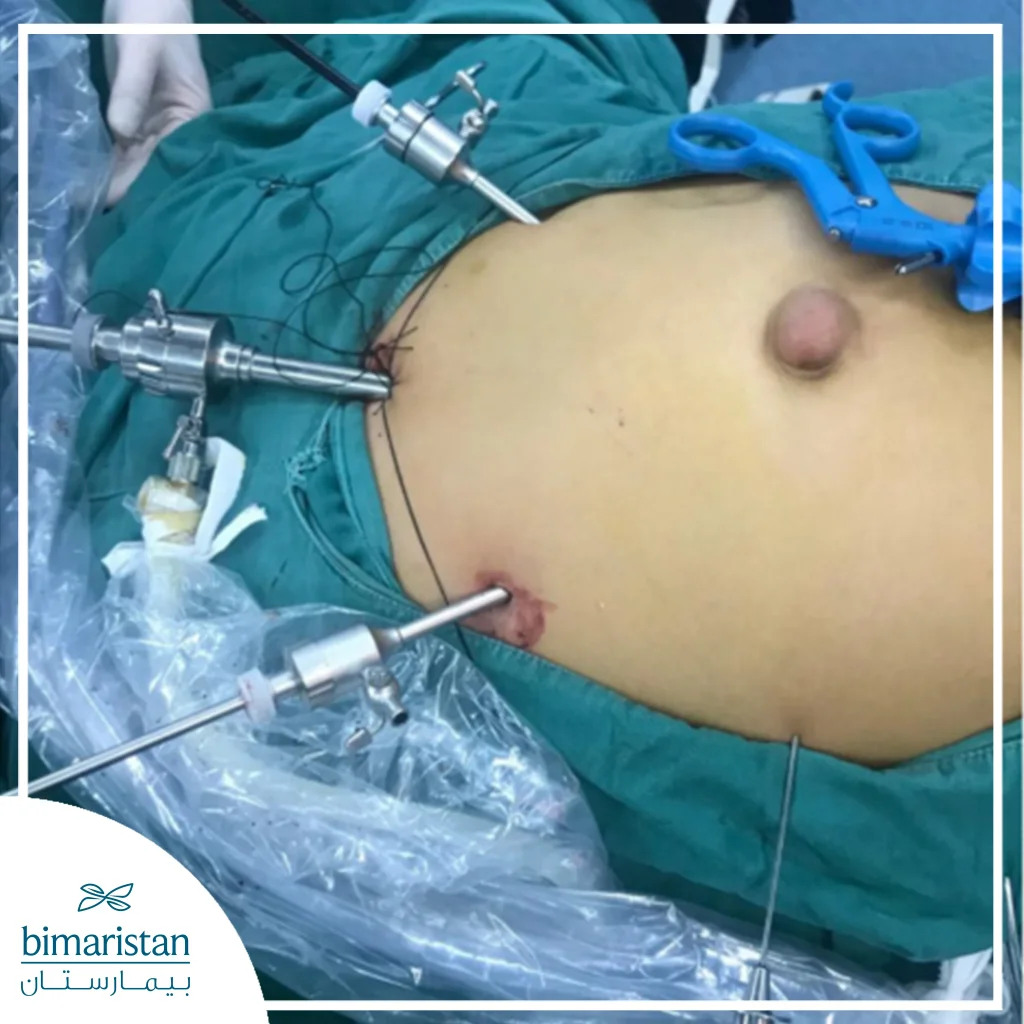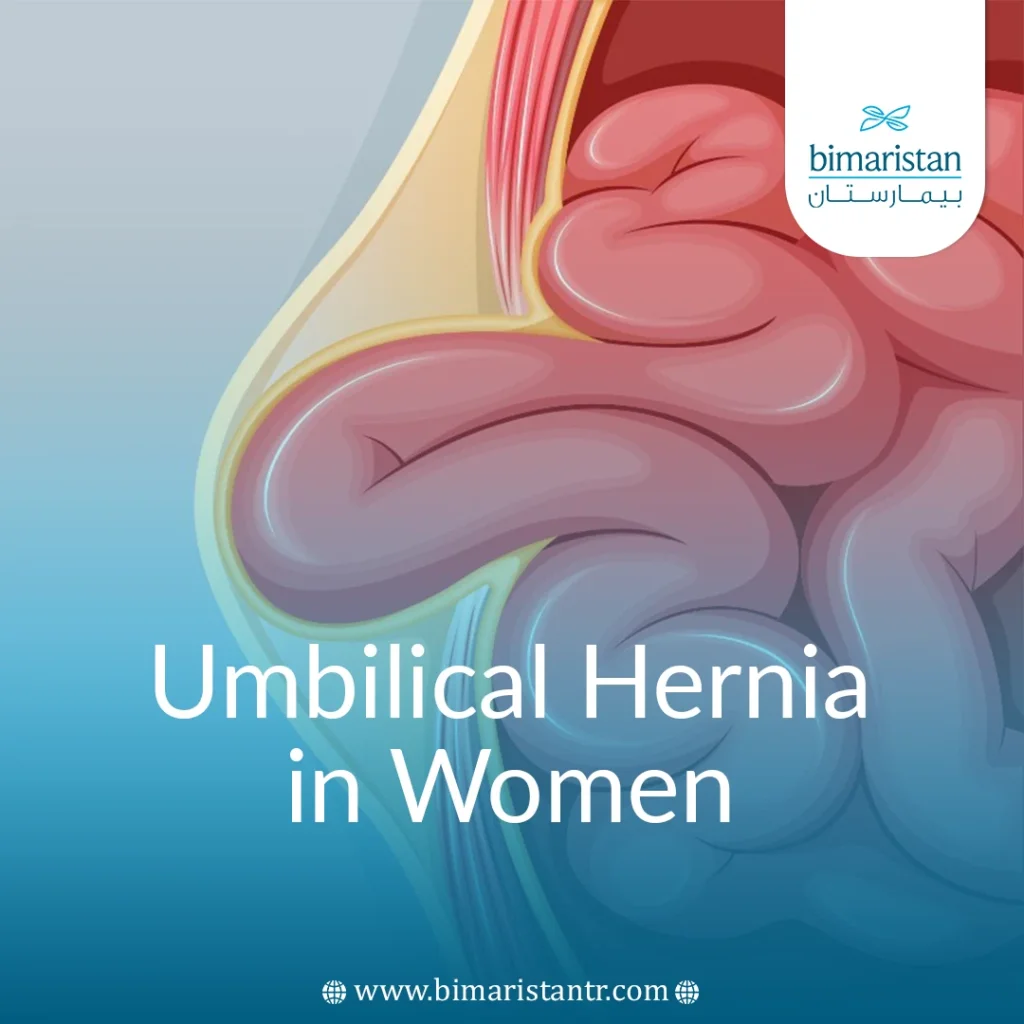An umbilical hernia in women is a weakness in the abdominal wall and the exit of some of its contents through the navel due to increased pressure in the abdomen, causing symptoms including pain and surgical treatment of hernia.
Umbilical hernia in women is a relatively common condition in women, especially in cases of twin pregnancies and multiple births, as it causes increased pressure on the muscles of the abdominal wall, weakening them.
This weakness leads to the exit of fatty tissue behind the wall and its confinement. In some cases, the intestines may exit, leading to severe symptoms in women that require urgent surgical intervention. Follow us in this article to learn more about the symptoms and how to treat umbilical hernia in women.
Overview of umbilical hernia in women
An umbilical hernia in women is a weakness in the abdominal wall muscles. An opening formed in this wall between loose muscles causes the exit of its contents from fatty tissue or intestinal veins.

An umbilical hernia is more common in women than men when it occurs in adults (umbilical hernia is most common in newborns). Anything that chronically increases pressure inside the abdomen and continuously puts pressure on its muscles from the inside weakens them and thus causes a hernia.
Causes of umbilical hernia in women
The most critical causes of umbilical hernia in adults are the following:
- Excess weight: Cases of excessive obesity and a high BMI in a person above 30 are among the causes of umbilical hernia.
- Previous abdominal surgeries: The surgical scar area is weaker than the rest of the skin, making it more susceptible to hernia.
- Severe chronic coughing: This leads to increased abdominal pressure in the patient, causing an umbilical hernia.
- Multiple pregnancies: Pregnancy makes the abdominal wall weak in women, leading to umbilical hernia in women (umbilical hernia in pregnant women or pregnancy hernia).
- Twin pregnancy: Twin pregnancy causes a severe increase in the size of the uterus in the pregnant woman, and thus, the enlargement of her abdomen and the weakness of the muscles that maintain the cohesion of the abdominal wall, which increases the incidence of umbilical hernia in women.
- Abdominal ascites: It is a severe accumulation of fluids in the abdominal cavity due to liver diseases such as cirrhosis, which results in increased intra-abdominal pressure, which is one of the causes of umbilical hernia.
- Lifting heavy weights: which may also lead in some cases to a hernia (an opening or bulge in the umbilical cord).
Symptoms of umbilical hernia in women
Symptoms of umbilical hernia are related to the size of the hernia, its contents, and the presence or absence of strangulation of the contents of the hernia (which in simple cases is only fatty tissue, but in severe cases, the intestines may herniate, leading to symptoms that require immediate treatment in children and adults alike).
In the event of herniation of the fatty tissue only and the interruption of its blood supply and its death, the symptoms of umbilical hernia in women will appear in the form of:
- Pain at the site of the hernia
- A minimal cystic swelling or protrusion at the site of the navel
However, in severe cases when the intestines herniate in an umbilical hernia, we may notice digestive symptoms such as:
- Constipation
- Vomiting
In more severe cases, when the intestines are strangulated in the umbilical hernia and the blood supply is interrupted, symptoms of intestinal infarction will occur (very severe pain at the site of the hernia), which is an emergency condition that requires immediate intervention and treatment to release the contents of the hernia and restore its blood supply as quickly as possible.

Complications of umbilical hernia in adults
One of the most critical complications of umbilical hernia in women, in particular, and adults, in general, is infarction and death of the intestine trapped in the neck of the hernia, which, if left untreated, may lead to serious, life-threatening infections in the abdominal cavity.
In the event of complications, the patient experiences severe pain at the site of the hernia, with a high temperature (sometimes accompanied by nausea and vomiting) and a change in the color of the cystic swelling at the site of the navel. If these symptoms appear, it is a life-threatening condition, and emergency intervention must be done immediately.
As a result, rapid surgical intervention is recommended for all hernias that contain an intestinal loop for fear of blood supply deficiency and to avoid these complications.
Diagnosis of umbilical hernia in adults
The diagnosis of umbilical hernia depends mainly on clinical examination in the doctor’s office. During the examination, a cystic swelling or protrusion (small or large) is observed at or around the navel, and the contents of this hernia (fatty tissue or intestinal loops) are also determined.
If the diagnosis is not possible, the doctor may use an echo to clarify the contents of the umbilical hernia. Some blood and radiological tests may be requested to rule out other medical conditions mixed with umbilical hernias.
Umbilical hernia treatment in women
Umbilical hernia treatment in women or adult men differs from treatment in children (due to the different causes and severity of hernia symptoms). While we may sometimes resort to the conservative option in children (i.e., treating umbilical hernia in children without surgery), treating umbilical hernia in adults requires surgery to avoid the risks of life-threatening hernia complications.
Indications for surgery to treat umbilical hernia
The hernia may be left for observation and not resort to surgery if the hernia is secondary and minor, but urgent surgical intervention is required if any of the following symptoms are present:
- The swelling of the hernia becomes painful
- Its diameter exceeds 1 cm
- Strangulation and cutting off the blood supply to the intestinal loop confined to the hernia
Umbilical hernia surgery in women
An umbilical hernia can be treated surgically, either by open surgery or by laparoscopic surgery, depending on the experience of the surgeon and the availability of appropriate equipment in the hospital.

The surgery is performed under general anesthesia and takes 30 minutes, during which the surgeon returns the contents of the umbilical hernia to its place, then supports and strengthens the abdominal wall muscles by placing a mesh behind the hernia site and closes it tightly with beads to enable it and prevent recurrence of the umbilical hernia.
Suppose the surgical intervention is delayed and the intestinal loop trapped in the hernia dies. In that case, the surgical consultant treats the case by removing this piece and connecting the two ends of the healthy intestine to restore the continuity of the intestinal tube.
After umbilical hernia surgery in women
In healthy, uncomplicated cases of umbilical hernia, the patient often returns home on the same day of the surgery after the effect of the anesthesia wears off, where he is given a set of recommendations that must be followed.
The most important of these recommendations is to avoid physical exertion or any work that would increase intra-abdominal pressure or contract its muscles for a period ranging from several days to three weeks.
The patient may suffer from some pain at the surgical incision site after the operation for a short period, which is managed with painkillers and wearing loose clothing until the umbilical hernia site in women heals.
A doctor should be consulted after surgery if symptoms are observed at the surgical site, such as:
- Infection at the wound site
- Fever
- Nausea and vomiting
- Hernia recurrence
Women suffer from umbilical hernia due to frequent pregnancy, but this condition is not exclusive to them. Men may also suffer from umbilical hernia, often caused by liver disease such as cirrhosis in chronic alcoholics, where cirrhosis of the liver occurs and then cirrhosis, leading to fluid accumulation and abdominal congestion, which ultimately leads to umbilical hernia in adults.
Umbilical hernia in women is treated with surgery to avoid complications such as strangulation of the hernia contents and interruption of its blood supply. Recovery from umbilical hernia surgery occurs quickly, and the patient returns to his normal life in less than a month.
Sources:

